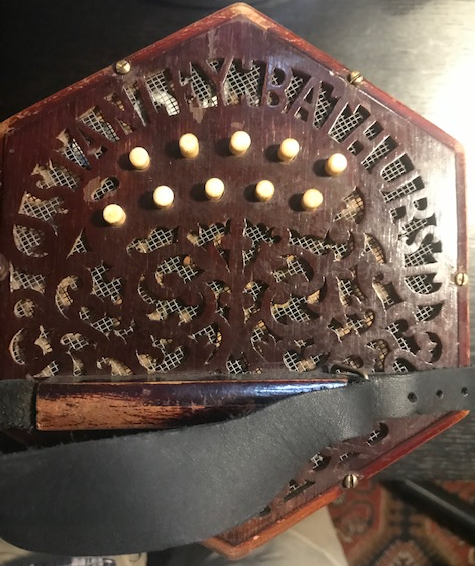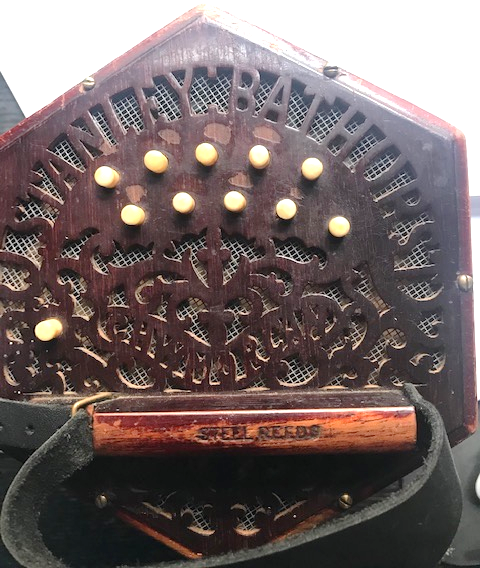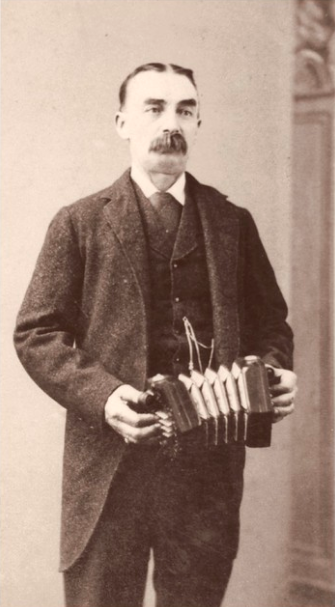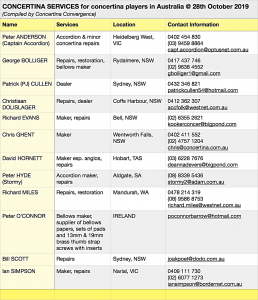Notes from our Australian Correspondent, Warren Fahey, February 2020
Things have been pretty hot in Australia with the country’s worst drought, horrid bushfires and, now, flooding. Thankfully, the music helps us in the worst of times. [Editor’s note: As if the drought, fires and flooding weren’t enough, at press time they are now dealing with coronavirus, as are we all].
Concertina Convergence. At a rough guess there are probably around 400 or 500 active concertina players across the country. The Concertina Convergence has about 180 on its email list. The Convergence is an email communication list for concertina players – concertinas@humphhall.org.
They also publish a list of Australian concertina makers and repairers.
Upcoming Festivals. The highlight of the year is always the concertina gathering at the National Folk Festival which is staged in Canberra over the Easter weekend, April 9-14. https://www.folkfestival.org.au/ This year Australia celebrates the music of Scotland. News of the sessions hosted by the Concertina Convergence will be posted soon on its email list. [Editor’s note: the 2020 festival has been cancelled due to the coronavirus threat]. Another good concertina festival is The Gathering, typically held in October https://www.bushtraditions.org/gathering/outline.htm. You can also find concertina information and tunes at the Bush Traditions site https://www.bushtraditions.org/, which also sports a brief Anglo German tuition section https://www.bushtraditions.org/tutors/concertina.htm
Concertina Maker in Focus: David Hornett. David is one of Australia’s concertina craftsmen and hails from the island of Tasmania. His handcrafted Anglo concertinas are definitely unique and include homemade reeds, all-Tasmanian wood and, no doubt a world first, kangaroo skin bellows. The instruments measure 5 7/8” across the bellows. He calls his instrument the ‘Tassey Tiger,’ in honour of the now extinct thylacine – the Tasmanian Tiger. The thylacine was one of the largest known carnivorous marsupials, and evolved about 4 million years ago. The last known live animal was captured in 1933 in Tasmania.
David says, “I began with three individual 39 button (plus air) instruments in 2015, then made seven 32 button (plus air) instruments, then moved on to 10 of the smaller 31 button instruments. The first three 39 button instruments were heavy and a bit slow, but looked nice. I learnt a lot about what not to do by making them. The smaller 31 button instruments are loud, sweet sounding, light and fast. I haven’t made any concertinas for the last six months – having been sidetracked by violins, ukes, a tagelharper, and am currently working on a viola.”
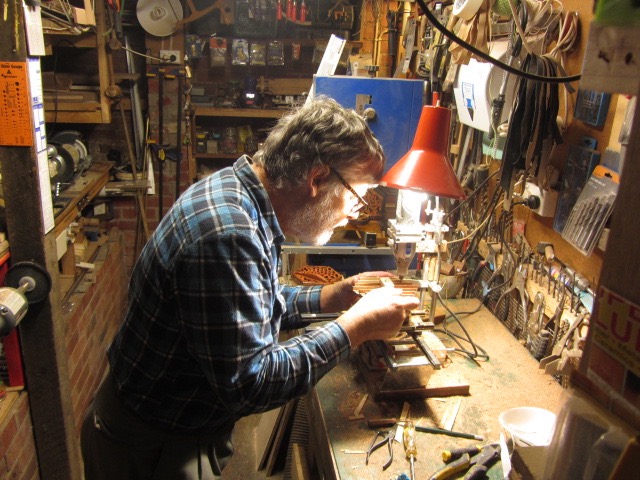
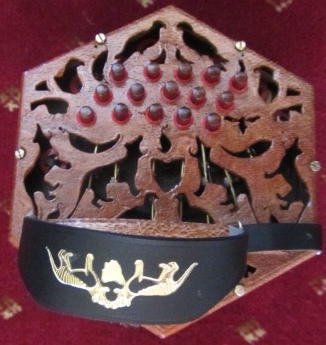
J. Stanley Concertina Maker. An “as rare as hen’s teeth” Stanley concertina surfaced late last year. Made in the 1880s by John Stanley (d. 1913), Bathurst, New South Wales, the Anglo German concertina was made using Lachenal reed pads. Stanley handcrafted the rest including intricate fretwork that carried his brand name and the purchaser’s name. This seems to be one of only three surviving Stanley concertinas. His instruments were advertised as being “designed to play loud for dance music.” For more information on Stanley see http://www.warrenfahey.com.au/concertina-doctor-of-bathurst/
